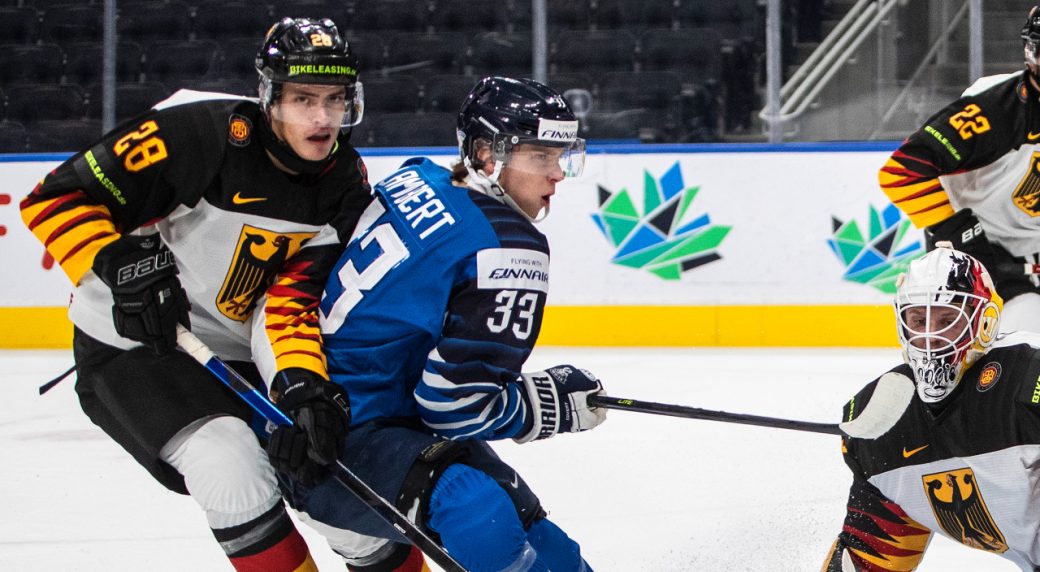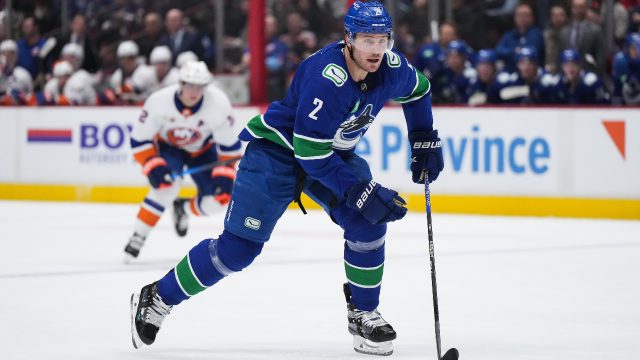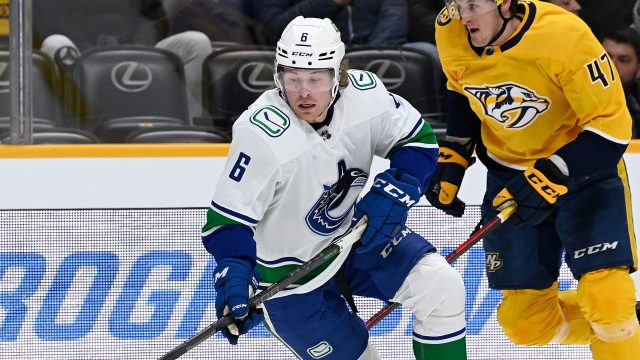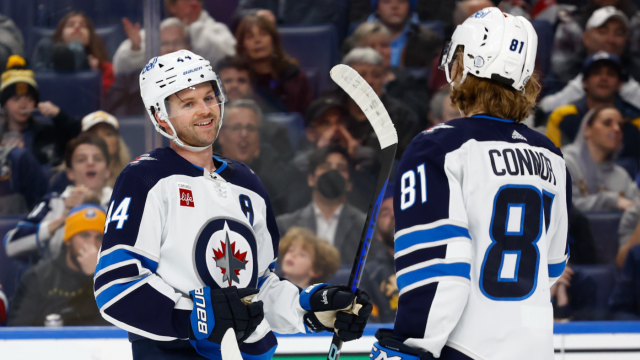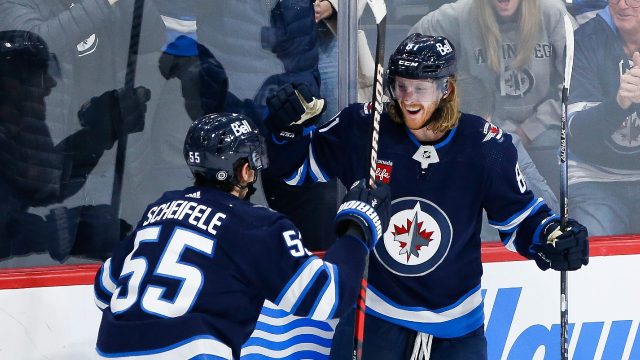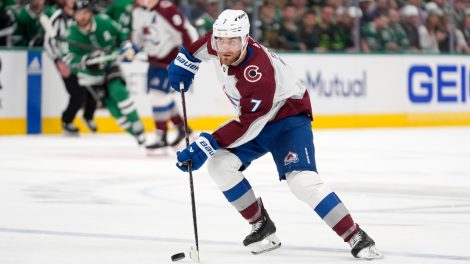CANCUN, Mexico — For the Winnipeg Jets, it’s a 30-game sprint to the finish line.
Beginning with Saturday’s tilt against the Chicago Blackhawks, the Jets will have 19 games against teams from the Western Conference (nine from the Central Division and 10 from the Pacific) and 11 games against teams from the East (six from the Metropolitan Division and five from the Atlantic).
The Jets have 15 games at home and 15 on the road, a perfect balance.
What that means in the grand scheme of things is unclear, it is simply presented for context.
As the Jets come out of the NHL All-Star break and bye week, they’re right in the heart of a battle for first place in both the Central Division and Western Conference.
Well situated, yes.
But plenty of room for improvement, of course.
And that’s what this final stretch is all about, producing more efforts like the one that resulted in a 4-2 win over the St. Louis Blues and fewer like the ones that led to a 2-5 record in the seven games that preceded that.
Jets goalie Connor Hellebuyck has already started 40 games this season and he figures to be in line to make 20-to-22 more, meaning David Rittich (12 starts) should be in line for eight-to-10.
That should allow Hellebuyck to stay in a strong rhythm, while also ensuring he’s not overworked and running on empty by the time the Stanley Cup playoffs arrive.
There should be plenty of twists and turns during the stretch run and it’s obvious that the March 3 trade deadline is clearly the most important one Jets general manager Kevin Cheveldayoff has encountered in his 12 seasons on the job since the franchise relocated from Atlanta.
There is appetite and opportunity to improve the Jets roster and it will certainly come at a cost.
However, with the west as wide open as it’s ever been, Cheveldayoff will be looking to find the right fit(s) as he evaluates the trades that are available to him.
Known in most circles as more on the conservative side, one would expect the Jets to be a bit more aggressive this time around. Especially with the complexion of the current roster and the uncertainty that comes with four important players who could become unrestricted free agents in the summer of 2024, barring an extension (or several).
The potential trade targets are always a popular subject when it comes to the monthly mailbag, but those will be reserved to a wider-ranging column in the near future.
For now, let’s try to tackle some of the other questions that were submitted before the Jets return to work:
Do you think a potential first-round matchup against Colorado will prevent the Jets from going all in? – Cole Grove
Cheveldayoff is the only person who knows this for sure, but he understands the importance of a long playoff run for this group that he’s already shown plenty of belief in. He also knows that you can’t operate in fear as a GM, even if the reigning Stanley Cup champions reside in the same division and could easily line up as a first-round opponent.
The chances were always high that if the Jets were to advance to the Western Conference final, they’d have to go through the Avalanche in either the first or second round anyway. Yes, the Avalanche are seemingly getting healthy and finding their collective stride, but they were always going to be a tough out.
Going all in is a relative term, but it’s hard to imagine the Jets doing anything but pushing plenty of chips into the centre of the table and making multiple moves to try and bolster the chances of a deep run. There are risks every year to taking a big swing (just ask the 2022 Florida Panthers) but the greater risk in this case is standing pat and doing nothing at all.
Are the Jets committed to keeping Neal Pionk or are they looking at options to move him? – Mike Friesen
If past behaviour is a predictor of future behaviour, it’s safe to suggest the Jets are committed to Pionk, who signed a four-year deal worth $23.5 million ($5.875 million) in the summer of 2021. When the Jets sign players to longer-term deals, they haven’t moved many of them — especially with much time left on the contracts. Two of the notable exceptions are Evander Kane and Zach Bogosian, who were traded in the same deal to the Buffalo Sabres in 2015.
That’s not to say it’s impossible the Jets consider moving Pionk, but it stands to reason that they believe he can return to form and help them during the final two years (and 30 games) left on his contract. Pionk put together consecutive strong seasons after the blockbuster deal with the New York Rangers involving Jacob Trouba and he was off to a relatively strong start to 2021-22 before a Dec. 5 game against the Toronto Maple Leafs.
I reference this game often and don’t think it’s a coincidence that things haven’t gone as smoothly since a reactionary play saw Pionk stick out his leg while defending Maple Leafs D-man Rasmus Sandin resulted in a two-game suspension. Before the game had been completed, Pionk was on the receiving end of a knee to the head from Jason Spezza, which left Pionk to deal with the effects of a concussion. Pionk suffered a broken foot later in the season that he played through and never fully recovered from.
This season has been a mixed bag for Pionk, who has already set a career-high for goals (with seven) while capitalizing on the best shooting percentage of his career (7.4 per cent to date, compared with his six-season average of 3.7 per cent). Pionk’s defensive zone play has been a bit erratic and the underlying numbers support that.
There have been some examples of solid play when the competitiveness he’s known for is evident, but the overall body of work has been inconsistent. Right-handed shooting blue-liners are often in short supply, so it’s possible a team looking for an upgrade would consider making an offer for Pionk. Whether that offer is enough to entice Cheveldayoff to make a deal? That’s impossible to know without knowing what the offers might be.
Back to your original question, with Pionk averaging just under 22 minutes of ice time per game (21:51 to be precise), that’s another signal the Jets are committed to him. It’s also worth noting that Pionk has a modified (six team) no-trade clause that kicks in next season.
For all of the deadline addition talk, do you see the Jets moving anyone out to make room? Specifically Neal Pionk? The Jets D is very expensive and their biggest needs are clearly play-driving and scoring forwards and Pionk hasn’t come close to playing to his contract value (Evolving Hockey has him at -$6.8 million) but his point total makes him easily tradeable to someone hurting for right-handed shooting D like the Ottawa Senators or Vancouver Canucks. Especially since Brenden Dillon-Ville Heinola were such an excellent pairing in their short time together – Cody Magnussson
Cap space is a valuable asset in a relatively flat cap world, so one cannot discount the importance of having the flexibility available. With the Jets projecting to already have north of $10 million available to them on March 3, clearing additional space doesn’t appear to be a priority for them. Shorter-term contracts also have appeal to general managers, so might that mean another GM sees acquiring Pionk as a positive? It’s not impossible.
In addition to the two teams mentioned, what about the San Jose Sharks? If they choose to move Erik Karlsson prior to the deadline, Pionk is a player who could supply some experience on the back end and help pick up some of the offensive slack. Since Pionk is only under contract through the 2024-25 season, perhaps he could be a consideration for Sharks GM Mike Grier in a potential deal for highly-coveted winger Timo Meier. That would satisfy the present portion of the trade, but it would also need to include prospects and picks for it to work, given the high number of teams that are expected to be bidding for his services. All to say is that it’s more likely the Jets will be absorbing money than shedding cap space in the coming weeks, unless things change dramatically during the next three weeks and change.
If the Jets swing and miss on big fish, do you see any scenario in which they weaponize the remaining cap space that they’d have after a couple smaller trades? I can see a scenario in which they add a couple $2 million players and then act as a third party with a team to get some draft capital back? – Matt Bergen
Until a deal or multiple moves are made, it’s impossible to gauge how big a fish is going to be acquired but it’s safe to say the Jets will be taking multiple swings.
Just like they did in 2018 before they acquired Paul Stastny and in 2019 when they tried to acquire Mark Stone from the Ottawa Senators before he landed with the Vegas Golden Knights and signed a long-term extension. The Jets took another swing and landed centre Kevin Hayes, though that move didn’t work out nearly as well as the deal for Stastny.
Missing out on the biggest fish doesn’t necessarily mean the Jets won’t find a way to improve the roster either. To satisfy all the items on the Jets’ wish list, one would expect Winnipeg will try and land a top-six forward, a bottom-six forward and a D-man – whether that’s a second or third pairing guy is still up in the air.
It’s not impossible the Jets could act as a third party team to try and secure some draft or prospect capital, but it’s more likely the Jets will focus on upgrading the roster. But becoming a third party conduit won’t be high on the priority list, barring something unforeseen. It’s more likely the Jets would use some of the available cap space to take a flier on someone like Edmonton Oilers winger Jesse Puljujarvi. The recovery of future assets is likely to be tabled until the offseason or perhaps further down the road, all things considered.
There has been a trend recently in the league for teams to lock up young players to long-term contract extensions before their entry-level contracts expire, with Matt Boldy of the Minnesota Wild being the latest. Will the Jets try to do this with Cole Perfetti once he’s eligible? The Jets have only ever done this once, with Nikolaj Ehlers in October of 2017. Is the Ehlers contract (seven years x $6 million) a good comparison for an early extension? – @AavcoCup
The timing for this question is impeccable, especially after the Buffalo Sabres inked centre Dylan Cozens to a seven year, $49.7 million deal on Tuesday. Cole Perfetti is having an excellent rookie season and figures to continue to play a prominent role during the stretch run as he tries to challenge Seattle Kraken centre Matty Beniers and a number of other quality candidates in the chase for the Calder Trophy.
For those wondering, Perfetti has one more season remaining on his entry-level contract, thanks in part to the 18 NHL games he played last season before suffering a season-ending injury.
The Ehlers comparison does make sense, though Perfetti’s representatives would likely point to Boldy (seven years, $7 million AAV) and Cozens and say that some level of inflation should be applied. Perfetti only has 65 games of NHL experience on his resume, compared to 169 for Cozens and 96 for Boldy, so it will be interesting to see the timing for a potential deal.
Ehlers signed his deal prior to his third NHL season, but an early guess would suggest Perfetti and his camp would prefer to have a better idea of where the salary cap is likely to be going over the next few years before nailing anything down longer-term — and the same can likely be said for the Jets. That doesn’t necessarily mean he’ll sign a bridge deal first, but there’s no rush to get a long-term contract done. But it’s safe to say it won’t be long before Perfetti slides into the category of a core piece the Jets will be looking to commit to.
How many of Chaz Lucius/Brad Lambert/Rutger McGroarty are still property of the Jets after March 3? Those are probably the three best forward prospects they have and I would bet that they aren’t dealt to bring back a rental. I would think they’d be dealt for a guy with more years of control. – High Wichenko
Should the Jets land someone like Meier — or to use someone from the 2022 deadline like Artturi Lehkonen (Colorado Avalanche) or even Brandon Hagel (Tampa Bay Lightning), it’s safe to expect one of Lucius, Lambert or McGroarty would be among the pieces the other team would be looking to acquire.
It’s also hard to imagine any of those players being shipped out for a rental, so you’re on the right track there. The smart money would be on at least two of the three — and possibly all three — remaining in the Jets’ organization after the NHL trade deadline, unless Cheveldayoff is able to execute a blockbuster.
Speaking of Lucius, the Jets announced earlier this week that he’d suffered a shoulder injury that required season-ending surgery. It’s the second consecutive season that Lucius was unable to finish the campaign due to injury. Lucius was on a tear after he was reassigned to the Portland Winterhawks, chipping in five goals and 15 points in six Western Hockey League games.
Lambert has four goals and seven points in six games since he was assigned to the Seattle Thunderbirds of the WHL. The Thunderbirds got another boost this week when the Arizona Coyotes reassigned centre Dylan Guenther to them.
McGroarty has 10 goals and 23 points in 28 games as a freshman for the University of Michigan Wolverines. In other Jets forward prospect news, Russian winger Dmitri Rashevsky signed a two-year extension to remain with the KHL’s Dynamo Moscow. The fifth-round pick off the Jets in 2021 is having another strong season (15 goals, 31 points in 60 KHL games) and is someone the Jets would have loved to get over to play in North America as early as this spring, but that process will now be delayed for at least a couple of years.
Why can’t Ville Heinola stick with the Jets? Where is he projected if he makes the team as a regular? First, second or third pairing? – Brian Weeres
This is my monthly reminder that Heinola, chosen 20th overall in the 2019 NHL Draft, doesn’t turn 22 until next month. Had he not been a surprise addition to the opening-day roster in 2019 as an 18-year-old after the news that Dustin Byfuglien had been granted a personal leave of absence on the eve of training camp, most folks wouldn’t think it’s taking Heinola forever to become an NHL regular.
Under normal circumstances, Heinola likely wouldn’t have competed for an NHL spot before he was 20 anyway, but toss in a pandemic shortened season and Heinola bouncing back and forth between the NHL and the American Hockey League during the past two seasons and both the player and the fan base seem to be growing impatient when it comes to his development path.
Back to your series of questions: This season, Heinola can’t stick with the Jets so far because he hasn’t been able to knock anyone on the depth chart out of the top-8. Heinola did enjoy a nice stretch of games (among the 10 NHL games he’s suited up in this season) and had some strong moments, but the other part of the equation is related to the role the Jets’ coaching staff is looking for out of the sixth spot.
There is a big penalty killing element required right now and while Heinola is a member of the Moose PK unit, he hasn’t been given that responsibility at the NHL level yet either. Jets head coach Rick Bowness said during training camp that there were not really any power play minutes available for Heinola right now and while that changed momentarily when Nate Schmidt was out with injury, there is no easy path for that to be different – barring a trade or series of trades.
Heinola is going to be a player teams are going to be asking about in the time leading up to the NHL trade deadline as well. Initially, Heinola projects to be a third pairing guy when he earns full-time duty, but it wouldn’t take much for him to move into second pairing minutes. As for his ceiling, it will be up to Heinola to show if he’s ultimately going to settle in as a second-pairing guy or eventually blossom into something more than that. The priority for Heinola is to earn full-time duty and his play will dictate what type of minutes he receives.

